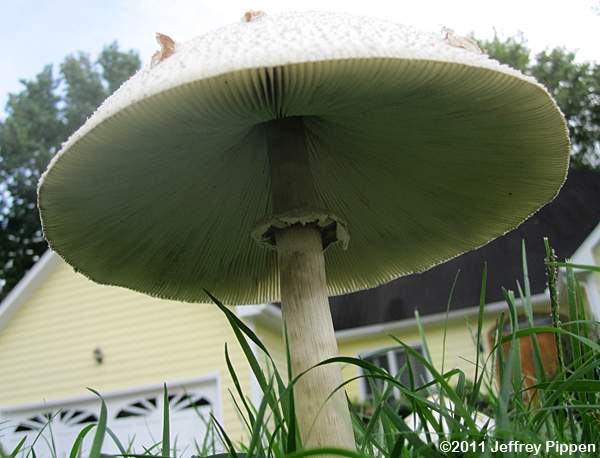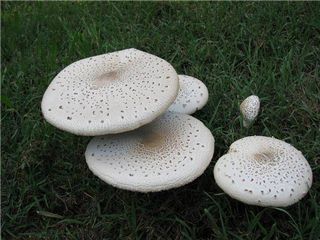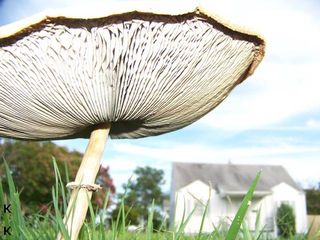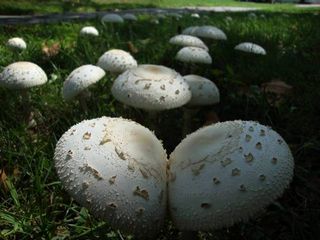Necessary Nutrition
How does this mighty mushroom get its food?



C. molybdites is a saprobe. A saprobe is an organism that gets its nutrients from dead or decaying organic material. Originally fungi were called saprophytes (sapro=dead, phytes=plants). However, this terminology is a bit outdated because it carries an implication that plants and fungi are closely related. Today we know that fungi and animals are more closely related so the correct term is saprobe.
Chlorophyllum molybdites depends on its mycelium to gather its nutrients needed to survive and reproduce. The mycelium takes up minerals in the soil such as nitrogen to use as chitin for its cell wall. The mycelium is made up of hyphae which contain exoenzymes that digest the food outside of the mushroom before it ingests the organic material. Mushrooms are still considered to be heterotrophic, meaning they eat organic material. Animals are also considered to be heterotrophic while most plants are considered to be autotrophic because they can produce their own food by photosynthesis.
This fungus grows in fairy rings so the old mycelium is dying in the inside of the circle, giving back its nitrogen and nutrients to the grass, allowing the grass to re-grow after it was initially consumed. The fungus continues to grow outward using the resources on the outside of the fairy rings. I think saprobe organisms are awesome because they have the capability to break down material that most others do not bother with. They can digest the proteins cellulose and lignin, which are the major components in plant cells: a feat many other organisms cannot do!

